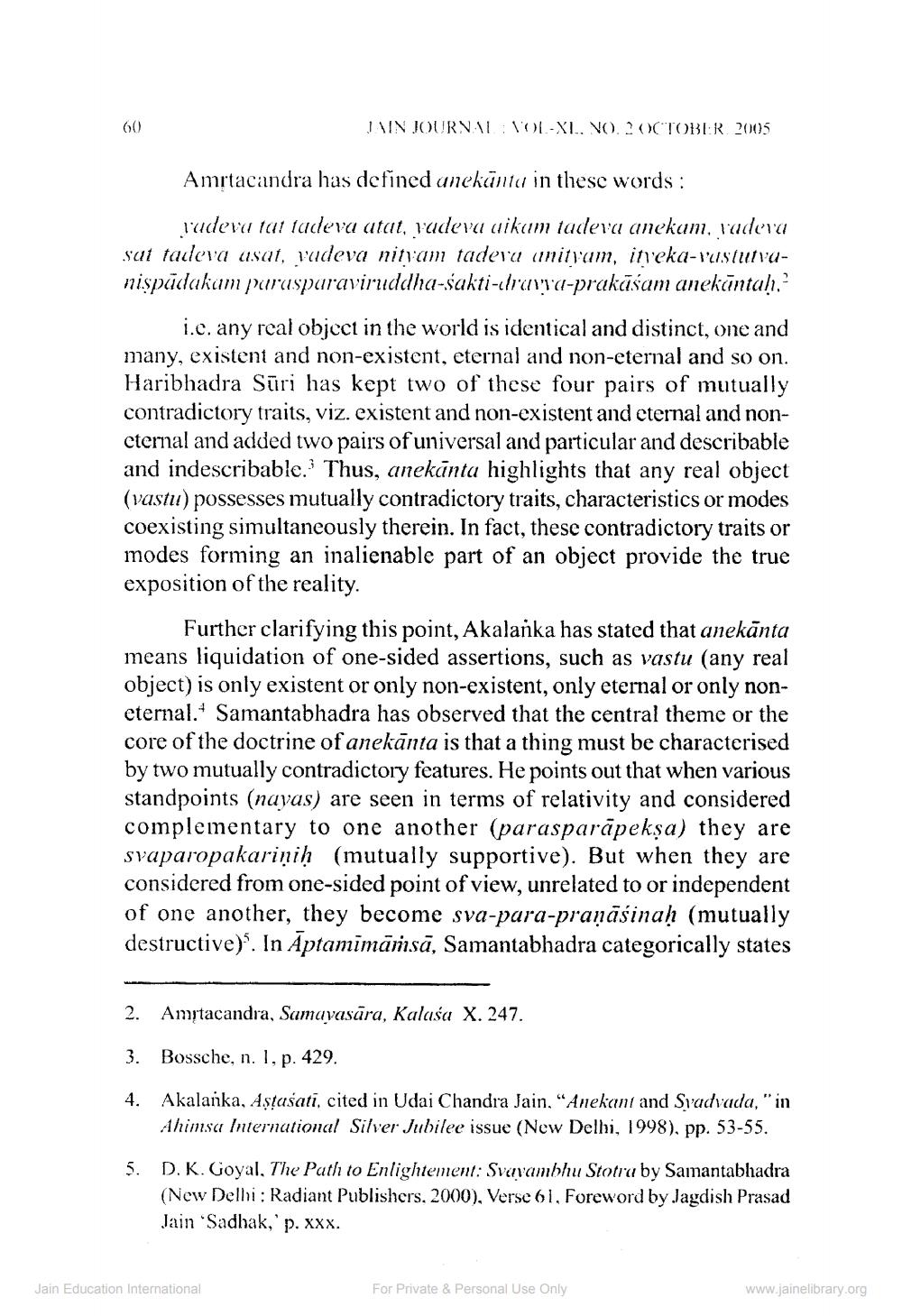________________
60
JAIN JOURNAL VOL-XL. NO. 2 OCTOBER 2005
Amrtacandra has defined anekanta in these words:
yadeva tat tadeva atat, yadeva aikam tadeva anekam, yadeva sat tadeva asat, yadeva nityam tadeva anityam, ityeka-vastutvaniṣpādakam parasparaviruddha-sakti-dravya-prakāśam anekāntaḥ,
i.c. any real object in the world is identical and distinct, one and many, existent and non-existent, eternal and non-eternal and so on. Haribhadra Suri has kept two of these four pairs of mutually contradictory traits, viz. existent and non-existent and eternal and noneternal and added two pairs of universal and particular and describable and indescribable. Thus, anekanta highlights that any real object (vastu) possesses mutually contradictory traits, characteristics or modes coexisting simultaneously therein. In fact, these contradictory traits or modes forming an inalienable part of an object provide the true exposition of the reality.
Further clarifying this point, Akalanka has stated that anekānta means liquidation of one-sided assertions, such as vastu (any real object) is only existent or only non-existent, only eternal or only noneternal. Samantabhadra has observed that the central theme or the core of the doctrine of anekānta is that a thing must be characterised by two mutually contradictory features. He points out that when various standpoints (nayas) are seen in terms of relativity and considered complementary to one another (parasparāpekṣa) they are svaparopakariņih (mutually supportive). But when they are considered from one-sided point of view, unrelated to or independent of one another, they become sva-para-praṇāśinaḥ (mutually destructive). In Aptamīmāṁsā, Samantabhadra categorically states
2. Amṛtacandra, Samayasāra, Kalasa X. 247.
3. Bossche, n. 1, p. 429.
4. Akalanka, Aṣṭasati, cited in Udai Chandra Jain, “Anekant and Syadvada, "in Ahimsa International Silver Jubilee issue (New Delhi, 1998), pp. 53-55.
5.
D. K. Goyal, The Path to Enlightement: Svayambhu Stotra by Samantabhadra (New Delhi: Radiant Publishers, 2000), Verse 61, Foreword by Jagdish Prasad Jain 'Sadhak,' p. xxx.
Jain Education International
For Private & Personal Use Only
www.jainelibrary.org




